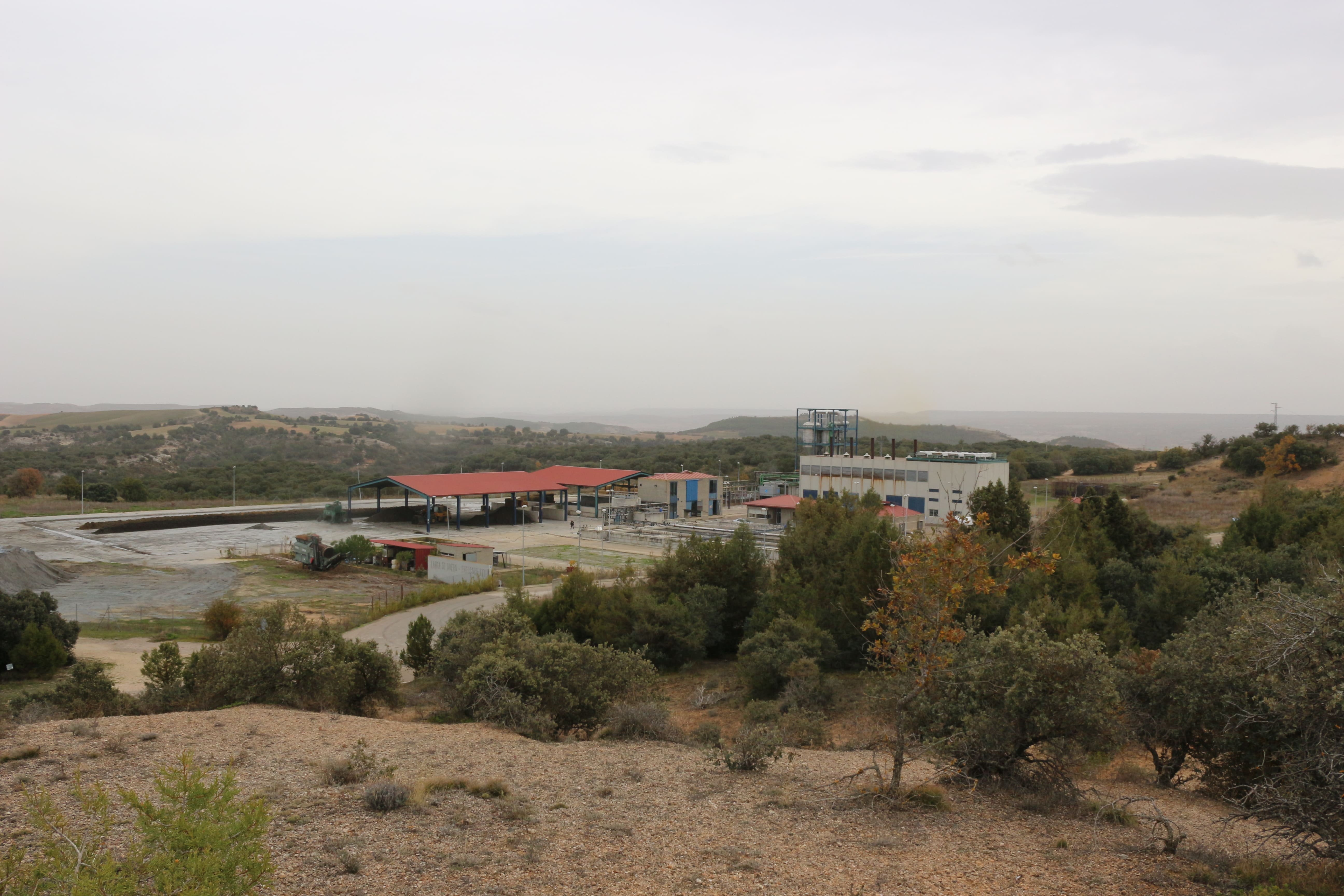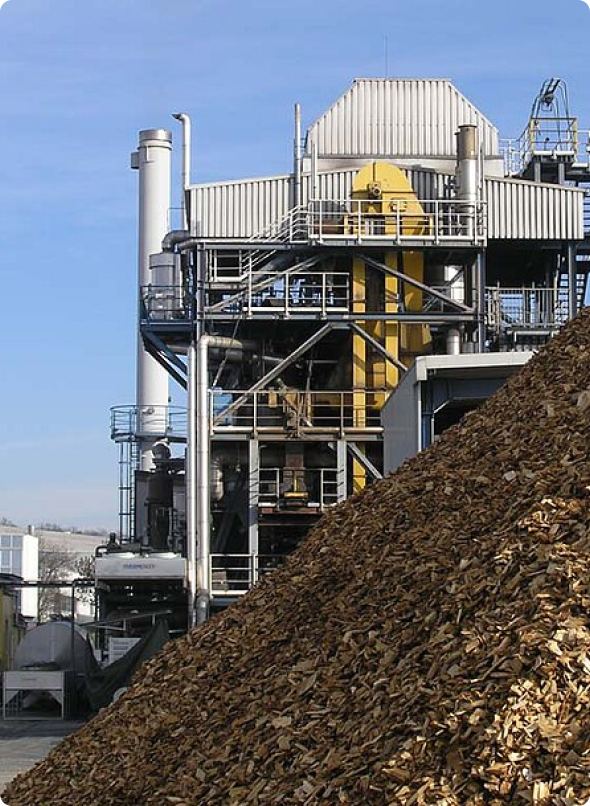
Spain Soria Biochar
Deploying an innovative pyrolysis and methanization solution using vine shoots and pruning as the main input to produce high-quality biochar

Overview
Terrawatt has more than 15 years' experience in biomass waste usage in the methanization and pyrolysis sector. Backed by the European Union with €2 million in subsidies, Terrawatt has been working on an innovative prototype pyrolysis and methanization solution to maximize the value of biomass waste. The company is now deploying their first industrial installation in Spain due to the high quantity of biomass waste available. Biochar is a carbon-rich solid material produced through pyrolysis, which involves heating biomass in the absence of oxygen. It is a stable form of charcoal that retains the carbon content from the original biomass and can sequester it for hundreds to thousands of years. When made from waste biomass, biochar is a powerful tool to harness organic carbon that may have otherwise been degraded and emitted to the atmosphere and instead store it in soils as a carbon sink. Pyrolysis also generates co-products (syngas and bio oil) which can be used and upgraded in many different ways to replace products such as fossil fuel-based heat and electricity. The Carbonfields biochar production site in Langa Duero, Soria province, Spain, will use vine shoots and pruning, an agricultural byproduct in the Ribera del Duero DO, as the main input for pyrolysis. Syngas is directly combusted and high-quality biochar is produced. This biochar will be applied to local agricultural fields. The Carbonfields site is under production and is expected to start construction in 2024 and start operations in 2025. The impact is based on expected annual production of 1,782 tonnes of biochar. Over the 5-year crediting period, the site is expected to be issued 22,177 carbon removal credits. This project was audited and validated by Finexfi (accredited ISO 17029 and under Riverse VVB guidance) in September 2023 with the present document and attached files listed in Appendix of the Detailed Project Description. A monitoring plan has been defined the verify the credits every year from 2025 to 2029. Notes on additionality and permanenceRegulatory additionality There are several European regulations that cover waste treatment and promote circularity, which relate to the project’s use of agricultural waste as a feedstock input. These include the EU’s Renewable Energy Directive (RED II), the Waste Framework Directive, and the Circular Economy Action Plan. However, none of these regulations require the use of orchard prunings for biochar production. This project’s activities are not mandated by regulation, and would not have necessarily occurred in the absence of Carbonfields due to regulation. Financial additionality The project seeks pre-financing from the sale of carbon credits to make the development of the site possible. With total expected investments of €10.7 million (in two steps, detailed in the following paragraph), upfront funding is crucial to the project’s feasibility. The analysis of the project’s business plan with sales of carbon credits and without demonstrates how critical this source of revenue is. Revenue from carbon credits is expected to make up 79% of the project's annual revenue over the next 15 years, if the project only produces biochar (with the remaining revenue coming mostly from the sale of biochar). However, the project plans on upgrading their machinery after 2-3 years of operations to be able to transform syngas into liquid biomethane and liquid CO2, which are valuable additional products. In that case, revenue from carbon credits would make up 23% of annual revenue. However, this upgrade will cost almost 4x that of the initial installation of the pyrolysis setup, and carbon credits are still critical to overcome this investment cost. With the sale of carbon credits, the project is expected to see a positive cumulative cash flow in year 7. Without carbon credits, this would occur in year 10. With the sale of carbon credits, the project is expected to have an internal rate of return of -23.5% over the 5-year crediting period, and 14% over 10 years. Without carbon credits, this would be -43% over 5 years, and 0.03% over 10 years. Permanence The project is eligible for removal credits thanks to carbon sequestration from biochar application to soil. The sequestration horizon is 100+ years, representing long-term carbon storage. The permanence of carbon sequestration is ensured by measuring characteristics of produced biochar that are known indicators of carbon stability: organic carbon and hydrogen content. These must be measured in laboratory chemical analyses. Following models proposed by Woolf et al (2021), these indicators are used to calculate carbon permanence and are combined with soil temperature to calculate the amount of carbon stored in the soil after 100 years. Because these indicators are so critical to calculating removal credits, they are KIIs and must be measured, reported and verified each year during the crediting period. Additionally, the project has submitted its sampling protocol, which has been validated by the Riverse team according to the Riverse Biochar sector-specific guidelines. According to the project’s estimates of biochar characteristics, it will have a permanence factor of 0.94 over 100 years. In the verification stage, the project will provide results of laboratory analyses of its biochar characteristics, and this criteria will be updated.
Technology & Mechanisms
Technology
Biochar
Mechanism
REMOVAL
Project Certifications
Offset projects requires all projects on the marketplace to have its methodology, project design, and outcomes verified by an approved third party. For more on our project vetting and onboarding process, review our Trust and Safety Framework.
RIV
Riverse is a carbon credit certification standard for Greentech projects in Europe.
Project Highlights
Conserves local biodiversity and habitats
Avoids non-CO2 greenhouse gas emissions
Creates local job opportunities
United Nations Sustainable Development Goals

Decent Work and Economic Growth
Promote sustained, inclusive and sustainable economic growth, full and productive employment and decent work for all

Life on Land
Protect, restore and promote sustainable use of terrestrial ecosystems, sustainably manage forests, combat desertification, and halt and reverse land degradation and halt biodiversity loss
